Archives
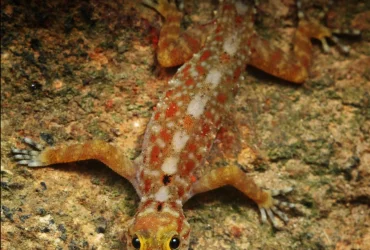 v12i1.305
v12i1.305ISSN: 1800-427X (printed)
eISSN: 1800-427X (online)
DOI:10.47605/tapro.v12i1.305
Submitted date: 4 August 2022
Accepted date: 29 January 2022
Published date: 12 May 2023
Pp. 36
Indian palm squirrel (Funambulus palmarum) feeds on spider egg sacs
P.D. Abegunawardhana & S.K. Bandara
*Corresponding author. E-mail: sanjaya.k.bandara@gmail.com
The Indian palm squirrel, Funambulus palmarum (Linnaeus, 1766) (Rodentia: Sciuridae) is known to feed on a wide range of plant items in the wild, including nuts, seeds, fruit, and bark, and will readily consume discarded food around human habitations. The species has been observed to prey opportunistically on insects such as termites and beetles. In addition, cannibalistic behaviour has also been recorded. Here we report the first observation of F. palmarum preying on spider egg sacs.
Section Editor: Sumudu Fernando
eISSN: 1800-427X (online)
DOI:10.47605/tapro.v12i1.305
Submitted date: 4 August 2022
Accepted date: 29 January 2022
Published date: 12 May 2023
Pp. 36
Indian palm squirrel (Funambulus palmarum) feeds on spider egg sacs
P.D. Abegunawardhana & S.K. Bandara
*Corresponding author. E-mail: sanjaya.k.bandara@gmail.com
The Indian palm squirrel, Funambulus palmarum (Linnaeus, 1766) (Rodentia: Sciuridae) is known to feed on a wide range of plant items in the wild, including nuts, seeds, fruit, and bark, and will readily consume discarded food around human habitations. The species has been observed to prey opportunistically on insects such as termites and beetles. In addition, cannibalistic behaviour has also been recorded. Here we report the first observation of F. palmarum preying on spider egg sacs.
Section Editor: Sumudu Fernando
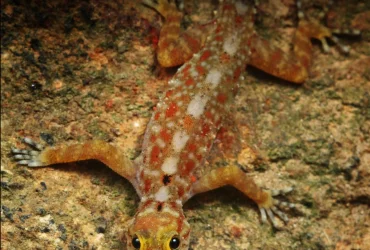 v12i1.304
v12i1.304ISSN: 1800-427X (printed)
eISSN: 1800-427X (online)
DOI:10.47605/tapro.v12i1.304
Submitted date: 1 August 2022
Accepted date: 29 January 2022
Published date: 12 May 2023
Pp. 34–35, pl. 20
Abnormal nest of baya weaver (Ploceus philippinus) from north Gujarat, India
K.J. Patel & H.J. Patel*
*Corresponding author. E-mail: hirenp9408@gmail.com
The baya weaver, Ploceus philippinus is a widespread resident bird throughout the Indian Subcontinent and is commonly found in open cultivation usually near water, in grasslands and scrublands. Its breeding season depends primarily on the southwest and northeast monsoon lasting from April to October. The species is particularly known for its unique nests built by males in colonies. The number of nests in each colony varies from 2–250. The nest is a retort-shaped structure with a long vertical entrance tube, densely woven out of strips of leaves of paddy, sugarcane or coarse grass, and blobs of mud are fixed inside the dome near the egg chamber. Moreover, the nests are usually built on branches of trees that overhang a water body which protects it from rats and other terrestrial animals. A complete baya weaver nest is a retort-shaped construction consisting of three parts: stalk, body, and entrance tube. Sharma (1995) classified 16 types of abnormal nests based on structural, orientation, and abnormalities.
Section Editor: Sumudu Fernando
eISSN: 1800-427X (online)
DOI:10.47605/tapro.v12i1.304
Submitted date: 1 August 2022
Accepted date: 29 January 2022
Published date: 12 May 2023
Pp. 34–35, pl. 20
Abnormal nest of baya weaver (Ploceus philippinus) from north Gujarat, India
K.J. Patel & H.J. Patel*
*Corresponding author. E-mail: hirenp9408@gmail.com
The baya weaver, Ploceus philippinus is a widespread resident bird throughout the Indian Subcontinent and is commonly found in open cultivation usually near water, in grasslands and scrublands. Its breeding season depends primarily on the southwest and northeast monsoon lasting from April to October. The species is particularly known for its unique nests built by males in colonies. The number of nests in each colony varies from 2–250. The nest is a retort-shaped structure with a long vertical entrance tube, densely woven out of strips of leaves of paddy, sugarcane or coarse grass, and blobs of mud are fixed inside the dome near the egg chamber. Moreover, the nests are usually built on branches of trees that overhang a water body which protects it from rats and other terrestrial animals. A complete baya weaver nest is a retort-shaped construction consisting of three parts: stalk, body, and entrance tube. Sharma (1995) classified 16 types of abnormal nests based on structural, orientation, and abnormalities.
Section Editor: Sumudu Fernando
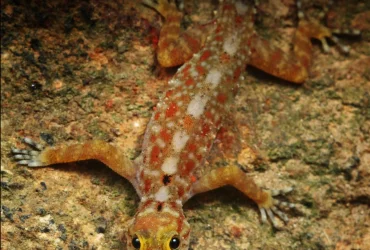 v12i1.303
v12i1.303ISSN: 1800-427X (printed)
eISSN: 1800-427X (online)
DOI:10.47605/tapro.v12i1.303
Submitted date: 20 July 2022
Accepted date: 29 December 2022
Published date: 12 May 2023
Pp. 33
The highest elevation record of river tern (Sterna aurantia) in the Indus River Basin
D. Sengupta*, Y. Upadhyay & T.R. Bhattacharya
*Corresponding author. E-mail: debaprasad.sengupta40@hotmail.com
The river tern (Sterna aurantia) is considered to be a globally vulnerable species. It is a native breeding resident of eastern and central Pakistan, Pan India (except the Trans-Himalayan region), Bangladesh, Myanmar, Thailand and Cambodia. It is a non-breeding resident in Nepal, southern Bhutan, Laos and Vietnam with vagrant records from Afghanistan and Iran. It breeds on sandy islands in freshwater lakes and rivers, and rarely estuaries.
Section Editor: Sumudu Fernando
eISSN: 1800-427X (online)
DOI:10.47605/tapro.v12i1.303
Submitted date: 20 July 2022
Accepted date: 29 December 2022
Published date: 12 May 2023
Pp. 33
The highest elevation record of river tern (Sterna aurantia) in the Indus River Basin
D. Sengupta*, Y. Upadhyay & T.R. Bhattacharya
*Corresponding author. E-mail: debaprasad.sengupta40@hotmail.com
The river tern (Sterna aurantia) is considered to be a globally vulnerable species. It is a native breeding resident of eastern and central Pakistan, Pan India (except the Trans-Himalayan region), Bangladesh, Myanmar, Thailand and Cambodia. It is a non-breeding resident in Nepal, southern Bhutan, Laos and Vietnam with vagrant records from Afghanistan and Iran. It breeds on sandy islands in freshwater lakes and rivers, and rarely estuaries.
Section Editor: Sumudu Fernando
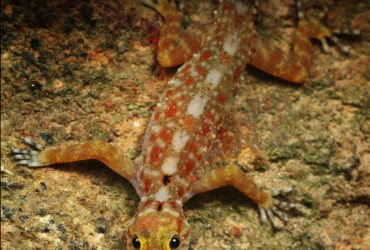 v12i1.302
v12i1.302ISSN: 1800-427X (printed)
eISSN: 1800-427X (online)
DOI:10.47605/tapro.v12i1.302
Submitted date: 7 September 2022
Accepted date: 29 March 2023
Published date: 12 May 2023
Pp. 30–32, pls. 18–19
Distribution and natural history notes on the herpetofauna of Ladakh, India
D.A. Patel*, C. Ramesh, S. Ghosal & P. Raina
*Corresponding author. E-mail: dmp8266@gmail.com
The Himalayas is the highest and youngest mountain range in the world. It provides unique habitat characteristics and is home to a unique assemblage of flora and fauna. There is very little information on the herpetofauna and their ecology in the trans-Himalayan region of Ladakh. Ladakh, located in an area of rain shadow, is characterized by extreme weather, climate, and terrain and relatively lower species richness. The region’s elevation ranges from 2,700 m to over 7,000 m a.s.l. and the annual precipitation is ~90–110 mm while the temperature ranges from -30 oC in winters to 30 oC in the summers.
Section Editor: Thasun Amarasinghe
eISSN: 1800-427X (online)
DOI:10.47605/tapro.v12i1.302
Submitted date: 7 September 2022
Accepted date: 29 March 2023
Published date: 12 May 2023
Pp. 30–32, pls. 18–19
Distribution and natural history notes on the herpetofauna of Ladakh, India
D.A. Patel*, C. Ramesh, S. Ghosal & P. Raina
*Corresponding author. E-mail: dmp8266@gmail.com
The Himalayas is the highest and youngest mountain range in the world. It provides unique habitat characteristics and is home to a unique assemblage of flora and fauna. There is very little information on the herpetofauna and their ecology in the trans-Himalayan region of Ladakh. Ladakh, located in an area of rain shadow, is characterized by extreme weather, climate, and terrain and relatively lower species richness. The region’s elevation ranges from 2,700 m to over 7,000 m a.s.l. and the annual precipitation is ~90–110 mm while the temperature ranges from -30 oC in winters to 30 oC in the summers.
Section Editor: Thasun Amarasinghe
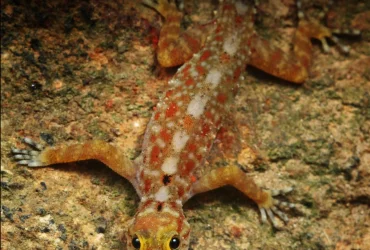 v12i1.301
v12i1.301ISSN: 1800-427X (printed)
eISSN: 1800-427X (online)
DOI:10.47605/tapro.v12i1.301
Submitted date: 21 March 2023
Accepted date: 29 April 2023
Published date: 12 May 2023
Pp. 29
Second report of striped grass skink (Eutropis trivittata) from Gujarat, India
H. Patel*, D. Chauhan & R. Vyas
*Corresponding author. E-mail: harshilpatel121@gmail.com
The striped grass skink, Eutropis trivittata (Hardwicke & Gray, 1827) is a wide ranging skink, distributed in northern and eastern India, Pakistan, Afghanistan, Bangladesh and Nepa. The nomen of the species had a murky taxonomic history and for a considerable time period it was known by a junior subjective synonym, E. dissimilis, which was rectified by Amarasinghe et al. (2022). The present communication is the first record of the species from the Saurashtra region of Gujarat state, India. In Gujarat, the species was previously reported from Central Gujarat, based on one specimen found three decades ago.
Section Editor: Thasun Amarasinghe
eISSN: 1800-427X (online)
DOI:10.47605/tapro.v12i1.301
Submitted date: 21 March 2023
Accepted date: 29 April 2023
Published date: 12 May 2023
Pp. 29
Second report of striped grass skink (Eutropis trivittata) from Gujarat, India
H. Patel*, D. Chauhan & R. Vyas
*Corresponding author. E-mail: harshilpatel121@gmail.com
The striped grass skink, Eutropis trivittata (Hardwicke & Gray, 1827) is a wide ranging skink, distributed in northern and eastern India, Pakistan, Afghanistan, Bangladesh and Nepa. The nomen of the species had a murky taxonomic history and for a considerable time period it was known by a junior subjective synonym, E. dissimilis, which was rectified by Amarasinghe et al. (2022). The present communication is the first record of the species from the Saurashtra region of Gujarat state, India. In Gujarat, the species was previously reported from Central Gujarat, based on one specimen found three decades ago.
Section Editor: Thasun Amarasinghe
Hubungi Kami
The ultimate aim of the journal is to provide an effective medium for communication of the latest and best scientific information.
Copyright © 2020 Taprobanica. All Rights Reserved
Jasa Pembuatan Website by IKT




